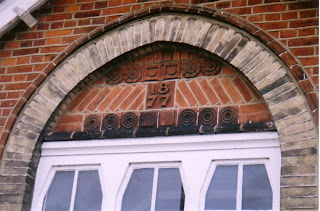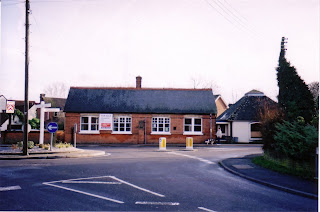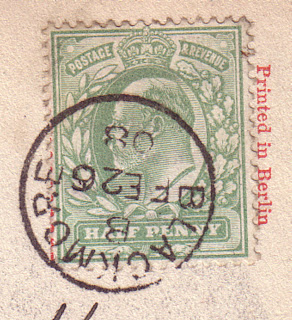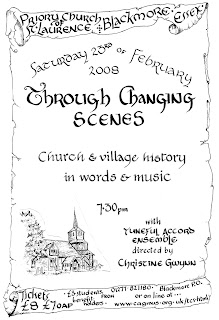Thirty Days Have September,
April, June and November,
All the rest have thirty-one,
Excepting February alone,
Which has but twenty-eight days clear
And twenty-nine in each leap year.
Leaping Backwards.
Here we are then. Known as 'Leap Day, it's first time ever that someone with a home computer has written something that could be read on the world-wide web on a Friday, 29 February. The last time that there was this date-line was in 1980: the year of the Spectrum ZX80. How things have changed!
A good friend of mine worked out when the last Friday leap-years occurred.
“A non-leap year comprises 365 days 52 weeks plus 1 day, so that a particular date say, February 28 - between one year and the next, moves forward one day, or two days in a leap year. As these usually occur every fourth year, this gives a total shift of five days between leap years. Thus, working backwards it will need seven leap years for the leap day, February 29 to cycle through the days of the week, i.e. a total of 28 years.
“Applying this figure to the 20th Century, leap days occurred on a Friday in the years 1980, 1952 and 1924, and during periods between these years our “example” date retracted through 7 weeks. At this point an additional clause in the rule book kicks in. The final year of any century, i.e. the one ending in double noughts, is only valid if it is divisible, not by 4, but by 400. Thus, although 2000 is “in”, both 1900 and 1800 are non-leap years. Moving back from 1924 to 1896, i.e. through 28 years, our “example” date has retired 34 days having missed one in 1900, and it will require three more leap years to make a total of 49, a number that is a multiple of seven. Our next year with five Fridays thus occurs in 1884, giving two more such years in the 19th Century. of 1856 and 1828.
“At this stage, reaching the 18th Century, we are approaching an even bigger impasse. Crossing the century marker of 1800 and leaping back a further three jumps from 1800 we arrive at 1788, followed by 1760, both years replete with five Fridays. From here the trail runs cold and expires, because in 1752 the Reform of the Calendar took place, albeit some 170 years after Pope Gregory XIII had performed a similar operation on the Continent. During this period Great Britain kept with the Julian calendar of 365 days, and eventually had to chop out 11 days in the month of September, 1752, in order to bring the system into line”.
Leaping Forwards
In September 1752 England moved from the Gregorian to Julian calendar, and “lost” 11 days – from 2nd to 14th September: the calendar leapt forwards!
Also, until 1752, New Years Day began on 25th March. This was, and still is a “Quarter Day”, Lady Day, being exactly nine months before Christmas.
When looking at ancient Parish Registers, these show that the beginning of each year was March. References are made to “March 1525/26” which can be quite confusing.
This can throw up some very strange dates. Take for example the oldest gravestone in Blackmore churchyard, inscribed:
"ROBERT PETCHEY late of Blakemore departed this life 8th of June 1699 aged 33 years 4 months and 12 days
Youth health and vealth promised life in vain!
Yet early worth by early death shall gain
Thus tho a manly frame here moulding lies
He dyd to live & only fell to rise
Then men be wise since you this hour may prove
If bad heavn’s vengeance and if good its love "
Robert Petchey was born on 27th January 1665, baptised 15th February 1665 and died, unmarried, on 8th June 1699. The date of burial in the register is given just as June. He was the eldest son of Robert, a mercer by trade, and Elizabeth, whose marriage is not recorded but had four children.
What you realise is that 1699 minus 1665 is 34 not 33 years.
In another example, Sarah, the sixth child of William Glascock, priest in charge at Blackmore and his wife Elizabeth, was baptised on 6th July 1672 but buried, an infant, 11th February 1672.
On this basis, I will wish you a very Happy New Year on 25th March!
Here we are then. Known as 'Leap Day, it's first time ever that someone with a home computer has written something that could be read on the world-wide web on a Friday, 29 February. The last time that there was this date-line was in 1980: the year of the Spectrum ZX80. How things have changed!
A good friend of mine worked out when the last Friday leap-years occurred.
“A non-leap year comprises 365 days 52 weeks plus 1 day, so that a particular date say, February 28 - between one year and the next, moves forward one day, or two days in a leap year. As these usually occur every fourth year, this gives a total shift of five days between leap years. Thus, working backwards it will need seven leap years for the leap day, February 29 to cycle through the days of the week, i.e. a total of 28 years.
“Applying this figure to the 20th Century, leap days occurred on a Friday in the years 1980, 1952 and 1924, and during periods between these years our “example” date retracted through 7 weeks. At this point an additional clause in the rule book kicks in. The final year of any century, i.e. the one ending in double noughts, is only valid if it is divisible, not by 4, but by 400. Thus, although 2000 is “in”, both 1900 and 1800 are non-leap years. Moving back from 1924 to 1896, i.e. through 28 years, our “example” date has retired 34 days having missed one in 1900, and it will require three more leap years to make a total of 49, a number that is a multiple of seven. Our next year with five Fridays thus occurs in 1884, giving two more such years in the 19th Century. of 1856 and 1828.
“At this stage, reaching the 18th Century, we are approaching an even bigger impasse. Crossing the century marker of 1800 and leaping back a further three jumps from 1800 we arrive at 1788, followed by 1760, both years replete with five Fridays. From here the trail runs cold and expires, because in 1752 the Reform of the Calendar took place, albeit some 170 years after Pope Gregory XIII had performed a similar operation on the Continent. During this period Great Britain kept with the Julian calendar of 365 days, and eventually had to chop out 11 days in the month of September, 1752, in order to bring the system into line”.
Leaping Forwards
In September 1752 England moved from the Gregorian to Julian calendar, and “lost” 11 days – from 2nd to 14th September: the calendar leapt forwards!
Also, until 1752, New Years Day began on 25th March. This was, and still is a “Quarter Day”, Lady Day, being exactly nine months before Christmas.
When looking at ancient Parish Registers, these show that the beginning of each year was March. References are made to “March 1525/26” which can be quite confusing.
This can throw up some very strange dates. Take for example the oldest gravestone in Blackmore churchyard, inscribed:
"ROBERT PETCHEY late of Blakemore departed this life 8th of June 1699 aged 33 years 4 months and 12 days
Youth health and vealth promised life in vain!
Yet early worth by early death shall gain
Thus tho a manly frame here moulding lies
He dyd to live & only fell to rise
Then men be wise since you this hour may prove
If bad heavn’s vengeance and if good its love "
Robert Petchey was born on 27th January 1665, baptised 15th February 1665 and died, unmarried, on 8th June 1699. The date of burial in the register is given just as June. He was the eldest son of Robert, a mercer by trade, and Elizabeth, whose marriage is not recorded but had four children.
What you realise is that 1699 minus 1665 is 34 not 33 years.
In another example, Sarah, the sixth child of William Glascock, priest in charge at Blackmore and his wife Elizabeth, was baptised on 6th July 1672 but buried, an infant, 11th February 1672.
On this basis, I will wish you a very Happy New Year on 25th March!






